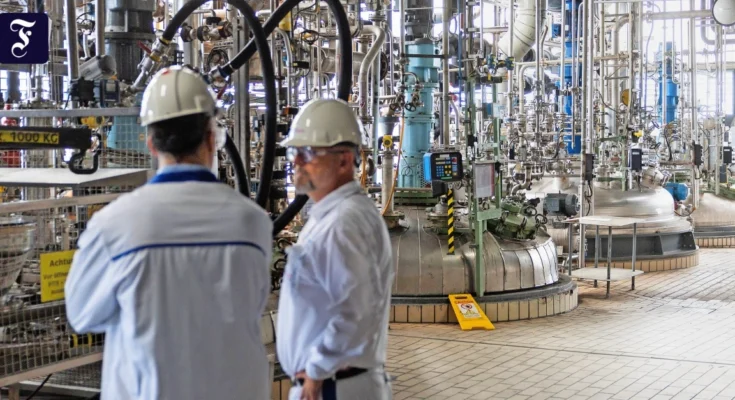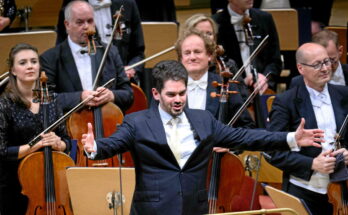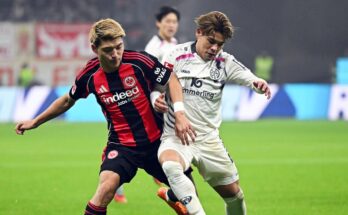The large boiler where ramipril is produced at the Höchst Industrial Park holds up to two and a half cubic meters of the chemical. The active ingredient is prescribed in tablet form to combat high blood pressure. Since the patent applied for by Hoechst AG expired, Ramipril is not only produced here, but also in many other factories. Things didn’t actually seem that important for a long time – but that has changed.
Around 100 trade visitors from various countries came to the industrial area at the end of October at the invitation of the active ingredient manufacturer Euroapi to see its production facilities. The company, which spun off from Hoechst’s successor, Sanofi, three years ago, uses industry trade shows to present its work to customers and some journalists.
Euroapi produces around 200 different active pharmaceutical ingredients in Frankfurt-Höchst and four other locations in Europe. In industry jargon they are called Active Pharmaceutical Ingredients; the abbreviation API is in the company name. Before the separation in 2022, Sanofi said that Euroapi should help ensure that active ingredients “of critical importance to patients in Europe and beyond” continue to be produced on the Old Continent.
China is letting Western countries experience its market power
Even at that time, production of active ingredients for generic drugs, that is, drugs that were not patented, occurred mostly in Asia. According to research conducted by the German Economic Institute (IW) in October on behalf of the Pro Generics Association, more than 50 percent of certified approvals for the production of the active ingredient were granted to manufacturers in India and China for at least ten years.
These early products are often still processed into tablets, drops or ointments in Europe – but dependence on supplies, especially from China, is an issue that is now also of concern to politicians. However, Beijing has repeatedly used other countries’ dependence on Chinese suppliers as a pressure tool with restrictions on rare earths exports and, most recently, in a conflict over chip manufacturer Nexperia.
Additionally, supply chains can break down, even without political objectives. In an effort to fight the coronavirus, China repeatedly closed factories and all container ports until the fall of 2022. In Europe, which was then hit by a particularly severe flu wave, fevers and antibiotic juice for children became scarce. This is not only due to dependence on China, but also: According to IW research, more than a third of the production locations of paracetamol, which is given to children in the form of fever juice, are in the People’s Republic of China. A similar situation occurs with amoxicillin, an antibiotic.
Production of metamizole was discontinued
Euroapi CEO, David Seignolle, sees the experience of recent years as clear evidence that European producers of active ingredients are needed. “Public health is suffering enough,” French said on the sidelines of an event in the Höchst industrial area.
The problem: In many cases, European manufacturers are unable to compete with active ingredient manufacturers in Asia on price. Euroapi, which has been in the red since being spun off from Sanofi, announced a year ago that it would gradually divest its 13 active ingredients by 2027.
Seignolle confirmed that the painkiller metamizole production plant in Frankfurt will be stopped at the end of this year – it is the last in Europe. As a result of this decision, the number of Euroapi employees in Höchst will likely fall from the current 750 to less than 700. Seignolle explained that the production of the painkiller metamizole, which is mainly used in hospitals, in Germany is no longer competitive.
Funding for investment in France
The Euroapi boss indicated that his company received funding in France to be able to invest in more efficient processes. The government in Paris has announced that it will support investment in Euroapi France’s sites in Vertolaye and Saint-Aubin-lès-Elbeuf of up to 140 million euros. These investment projects are placed by the EU Commission on the list of projects intended to contribute to the competitiveness of European industry and therefore apply as an exemption from EU state aid law.
“Important Projects of Common European Interest” (IPCEI), as they are called in EU jargon, also exist in Germany – although not yet in the health sector. “If security of supply is of any value to us in geopolitically and trade-politically uncertain times, we need a program to expand strategic production capacities, especially for critical active ingredients, biopharmaceuticals and medical technologies,” said Joachim Kreysing, CEO of chemical association VCI Hessen, on Thursday. His main job is managing director of Infraserv, the management company of the Höchst industrial area.
However, there is a risk that subsidies will be wasted. This can also be seen from the IPCEI projects launched in Germany for other industries: the now bankrupt battery manufacturer Northvolt was involved in one of these projects.
Discussion of health insurance savings policies
Another possibility to promote the production of active pharmaceutical ingredients in Europe or at least maintain existing production facilities is to change the pricing policies of health insurance companies. When they tender a contract to supply drugs to their insured, the contract usually goes to the provider with the lowest price. Based on the experience of the winter 2022/2023, antibiotics it has been determined that when tendering new contracts, active ingredient providers of European production should always be selected – if available. This is what the Law to Combat Drug Supply Congestion and Improve Services is all about.
There is discussion about extending this regulation to other medicines benefiting European manufacturers. However, this does not completely eliminate dependence on Asian suppliers: companies that produce active ingredients here, such as Euroapi, also source the basic chemicals they need from Asia. At the Höchst site, the proportion of primary products sourced from Asia is 25 percent, according to the company.
Euroapi boss Seignolle said that much could still be changed regarding the terms of value creation in Europe: “If we produce corticosteroids in Vertolaye, we need 25 steps – some of our competitors only do five steps in Europe.”



